
by Erin Long | Aug 30, 2019 | Uncategorized, Woodworking
Choosing the right type of dust collector for your industrial woodworking application can improve safety and save money. Wood dust is highly combustible, and as a result, it causes many accidental fires and explosions. Industrial woodworking applications may include cutting, planing, sanding, routing, and sawing. The process and the type of wood help determine your dust collector options.
 Wood Dust Filtration Challenges
Wood Dust Filtration Challenges
Many industrial woodworking facilities use several different machines for wood processing. As a result, they produce dust that contains a variety of particle sizes and characteristics. This makes each woodworking dust collection system a unique project.
Because wood dust can absorb water, in a moist environment it can become sticky and start to form clumps of material. Also, wood particles can be sharp-edged and abrasive. The most serious challenge, however, is the highly combustible nature of wood dust. Regardless of the type of dust collection system, it must always include appropriate fire and explosion safety devices.
What Are Your Choices?
Wood dust collection may use any type of dust control system. This includes cyclones, baghouses, and cartridge collectors. Often, a woodworking application may use more than one type of dust collector.
For example, a company that produces large pieces of wood and fine sawdust may use a cyclone to drop out the large material. Then the airflow may proceed to a cartridge collector for the capture of the fine dust. Another company may use a baghouse for wood dust because the material is sticky or fibrous.
The Cyclone
First option: a cyclone, which removes large pieces of wood or clumps of sticky material. Because a cyclone doesn’t use any filters, it can handle abrasive or other harsh materials. A cyclone only handles material heavy enough to fall out of the air stream. Lighter dust will pass through.
As part of a wood dust collection system, a cyclone works to remove the rougher materials that might cause problems in a baghouse or cartridge collector. With finer dust, however, you need a dust collector that captures small particles. This means using filters.
The Baghouse
One option for a dust collector with filters is baghouse. Baghouses use long cloth bags as filters. These collect dust on the surface. To keep them working efficiently, the baghouse cleans its bags by using fans or compressed air. Older baghouses may shake the bags to clean them, but this is a messy and high maintenance method.
Baghouses excel at capturing fibrous or sticky dust. They can handle very heavy dust loading, and they also handle high temperatures. One serious downside of a baghouse is the work required to change the bags. One baghouse may have hundreds of bags, and nobody wants the job of replacing all of them in a tight, dirty space.
Size can be another issue with baghouses. To provide the needed surface area, baghouses need lots of bags, making them very large. Not all facilities may have any issue with this, but some may seek a smaller, more compact option.
The Cartridge Collector
That smaller option is a cartridge dust collector. The pleated cartridges provide much more surface area in a smaller space. The woodworking industry uses cartridge collectors more often as they prove their usefulness. Woodworking applications such as sanding dry wood produce very fine sawdust.
A cartridge dust collector efficiently captures this fine dust. Pulses of compressed air clean the filters. This gives them a longer filter life, especially in vertical cartridge collectors. Cartridge collectors work well for fine sawdust, but they also work well for dust that contains contaminants that need to be captured.
Some contaminants in wood dust may include resins, adhesives, and dye pigments. Since any of these could cause illness or harm if released into the air, a dust collection system must control these materials. A cartridge collector has the highest filter efficiency for small particles. This means that it captures even very fine dust. With added after-filters, the efficiency goes even higher. Spunbond filter material with PTFE coating will resist most materials, even sticky or damp dust.
What to Consider Before Choosing a Dust Collector for Woodworking
These factors will affect what type of dust collection system you may need. However, this is not a substitute for having your facility assessed by a dust collection professional. Factors include:
- Particle size
- Abrasiveness of dust
- Type of woodworking process
- The moisture content of the material
- Contaminants
- Space and cost considerations
- High-temperature conditions
- Amount of dust loading required
- Filter and maintenance costs
For example, a baghouse will require more downtime and maintenance labor to change out filter bags. Cartridge collector filters take less time and effort to replace. On the other hand, bags withstand high temperatures and harsher materials.
Industrial Woodworking Dust Control
Whatever type of dust collection system you choose for your wood dust, make sure the system meets NFPA standards for fire and explosion safety.
Wood dust fires are very common and can spread very quickly. A well-designed system will have safety features to protect people and property. All types of woodworking dust collection require these controls.
Wood dust can easily escape and accumulate around work areas. You can control this fire hazard by using source capture dust collection, where the system captures dust at the source. For example, hoods located over woodworking machines can pull the dust away before it gets loose in the facility.
The best way to find out which type of dust collector is right for your application is to contact one of our dust collection experts. We can discuss your woodworking processes and help you choose the type of system that will work best to control your wood dust.
Read more
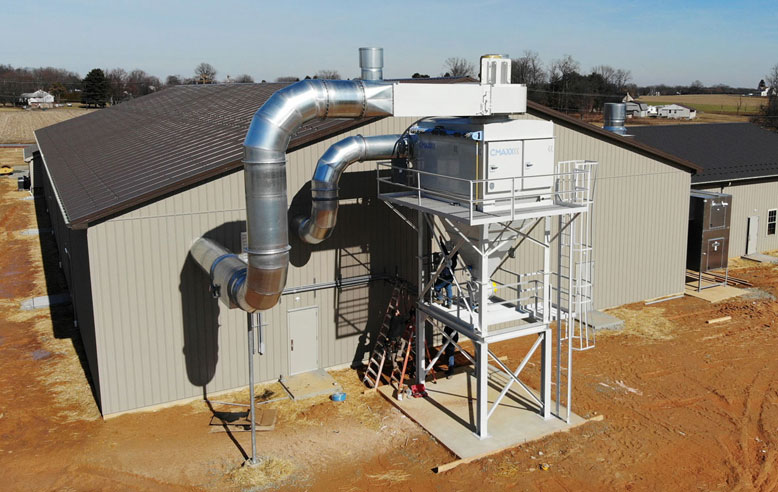
by Scott Stearns | Apr 11, 2018 | Woodworking
In Lancaster, in the heart of the Pennsylvania Amish and Mennonite communities, woodworking is a major industry. Traditionally, the wood shop dust collector system of choice for these furniture and cabinet makers has been the baghouse. However, the CMAXX cartridge dust and fume collector can work just as well as a baghouse on many of these applications. We recently had an opportunity to work with one of our reps, Isaac Lapp from Lapp Millwright, to introduce the CMAXX to a cabinet maker to handle their wood dust. Fortunately, Isaac Lapp and our own Charlie Miller were able to work with this customer to help him design the system he needed.
“Our competitors were in there at the time telling them that a cartridge collector absolutely would not work,” Isaac says. “Charlie was able to show them that it would work, and now it’s there and working great.”
A CMAXX system can be the perfect solution for certain wood dust applications. The efforts of Charlie and Isaac convinced the customer to take the risk of trying a cartridge collector, and now they are very pleased that they did.
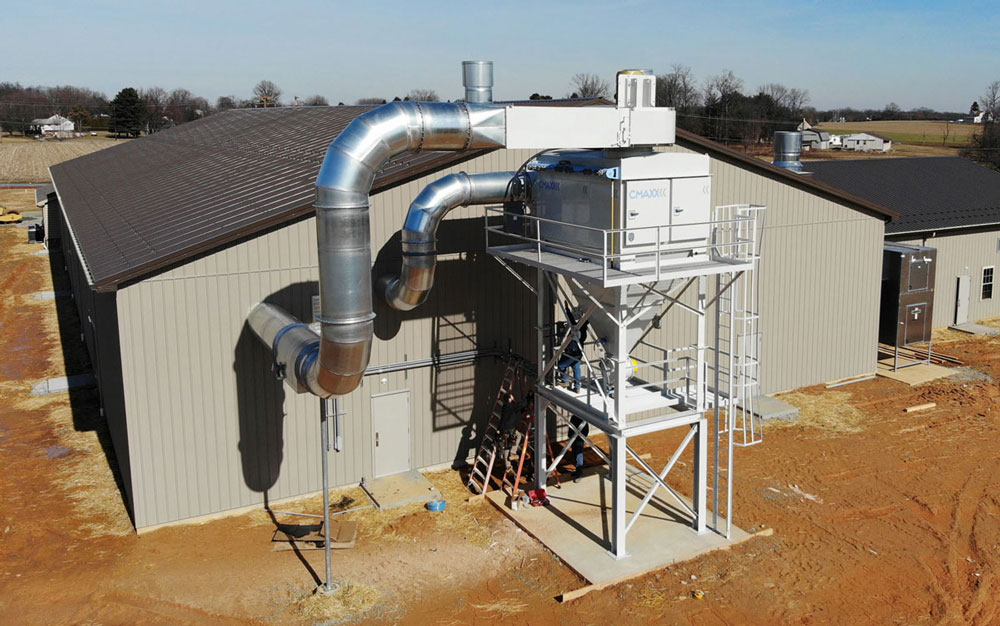
Part of putting the customer at ease about this decision was Charlie’s commitment to walking them through the process from the very early design phases to the end product. In this application, where the capture points are on saws, sanders, and routers, the wood dust is generally very fine. The customer has noted that the system has given them strong airflow on all of the capture points and maintained that airflow, meaning the cartridges are functioning exactly as they should.
For this customer, one of the strongest selling points for the cartridge collector over a baghouse was the size of the collector. A traditional round baghouse would have been nearly 60 feet high to suit the needs of this customer. The CMAXX footprint is very neat and efficient compared to a towering BRF.

This customer needed the wood shop dust collector to be set up so that trucks could drive underneath it. The extra height added by a baghouse would have been excessive. Despite the initial uncertainty about a cartridge collector, it was an option that kept the collector profile much smaller than a baghouse.
Since this customer has seen great success with the CMAXX collector, other customers are making the leap and putting our cartridge collectors on their wood applications. With a “foot in the door” with a cartridge collector at a brand new wood dust facility, others have been willing to take another look.
When one customer sees success with a product, others are more likely to follow, and Isaac reports that he’s getting a much better reception now when suggesting a CMAXX for applications.
Baghouses and cartridge collectors can both work well for woodworking dust collection, but many people are resistant to the idea of cartridge collectors working for wood. The truth is that for many wood shop dust collector applications, a cartridge collector works just as well, and it offers the option of a much smaller footprint, easier maintenance, and excellent efficiency.
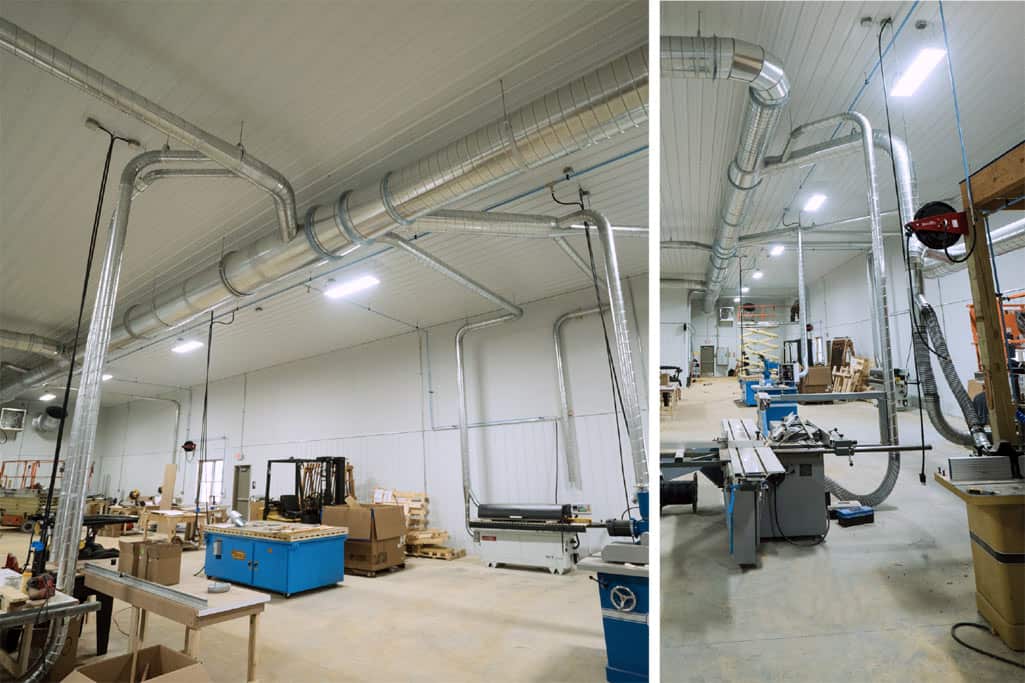
Read more in our blog post: Selecting an Industrial Dust Collector for Woodworking?
Read more
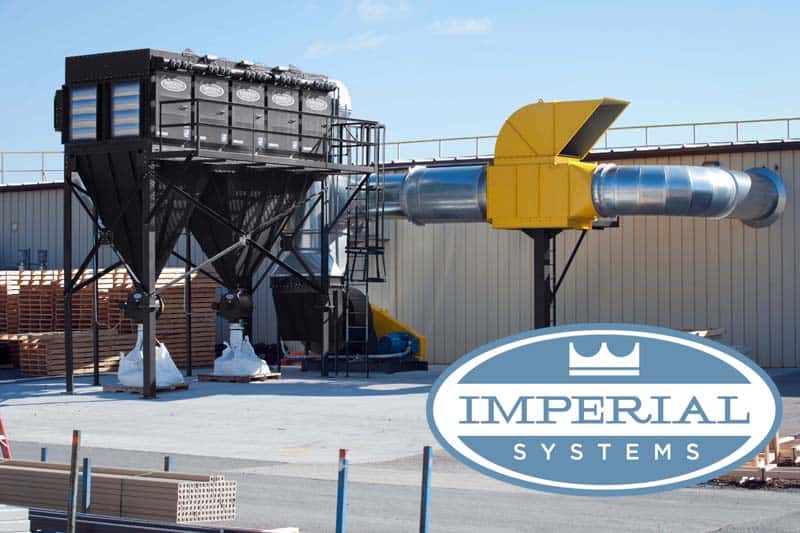
by Imperial Systems | Aug 29, 2017 | Woodworking
Traditionally, the woodworking industry has relied on cyclones and baghouses. The cyclone is the workhorse for removing larger particles with a minimum of hassle, but it lets smaller particles through. The baghouse, the traditional workhorse of the wood industry, has been the go-to dust collector for this application for a long time. However, this is changing as cartridge collectors are making an impact. The CMAXX for woodworking and wood dust is certainly proving itself in the field.
Cartridge Collector Advantages for Wood Dust
A cartridge collector like the CMAXX offers many advantages over a baghouse. The first one is obviously the size. Because cartridge filters are pleated, you can fit the same amount of surface area into a relatively tiny collector.
The second advantage of CMAXX for woodworking is the ease of changing filters. A baghouse full of old sawdust is not anyone’s idea of fun, and it may even be considered an OSHA confined space. But with a CMAXX cartridge collector, lift rails easily slide the filters out. So, there’s no getting inside the collector and no climbing around in a mess of wood dust. Plus, there’s no changing dozens or hundreds of bags.
A third advantage to using a CMAXX for woodworking is that it can capture very small particles very efficiently. With DeltaMAXX nanofiber filters with a MERV 15 rating, your shop will be cleaner than ever before, without the fine dust that used to get through.
A fourth advantage is the ease of customizing a CMAXX for your woodworking application. Many different types of fire and explosion prevention are available, improving safety and protecting buildings from damage. Also, for special applications, options like overbags can help. They make cartridge filters even better at handling the difficult material a woodworking application can create.
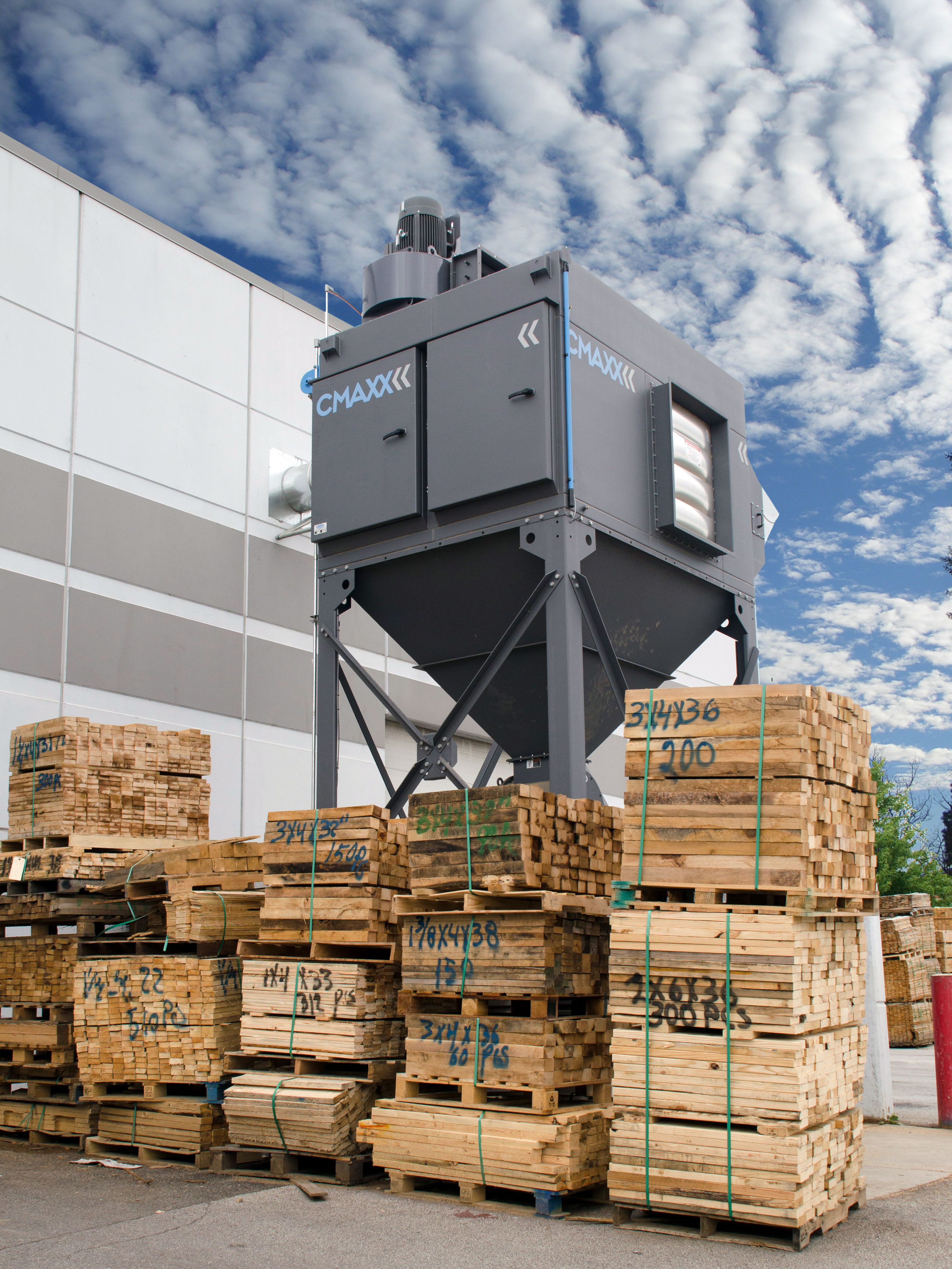
CMAXX Outperforms the Baghouse
We have worked overtime with many woodworking companies, and they usually want baghouses. However, recently many customers have checked out the CMAXX for wood dust. They looked at how it works, and the quality, and decided to give it a try.
What they’ve found is that for some types of woodworking applications, the CMAXX outperforms a baghouse. It has a much smaller footprint and is much less messy and time-consuming. Many of our woodworking customers are Amish and strongly value efficiency, good quality, and things that just work well. They have chosen CMAXX for woodworking because it meets their high standards.
Consider a CMAXX designed by our systems specialists for your woodworking application. It can handle everything from mixed large and small particulate to extremely fine wood dust. It can save you time and space, protect you from the risk of combustion, and make your life easier. Allow one of our specialists to show you how a CMAXX for woodworking is right for our shop. It can be an amazing value in quality, space and time savings, and efficiency.
Read more
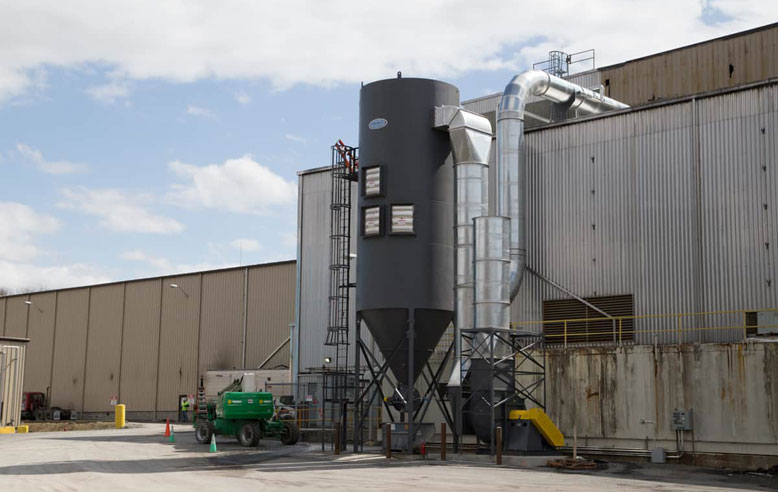
by Imperial Systems | Apr 12, 2017 | Woodworking
The baghouse is a workhorse of the dust collection industry, handling everything from high temperatures to rough, abrasive dust. The Imperial Systems engineers are experts in designing baghouse systems specifically for woodworking and paper recycling applications. The BRF baghouse system has certainly proven itself in these industries, as these case studies show.
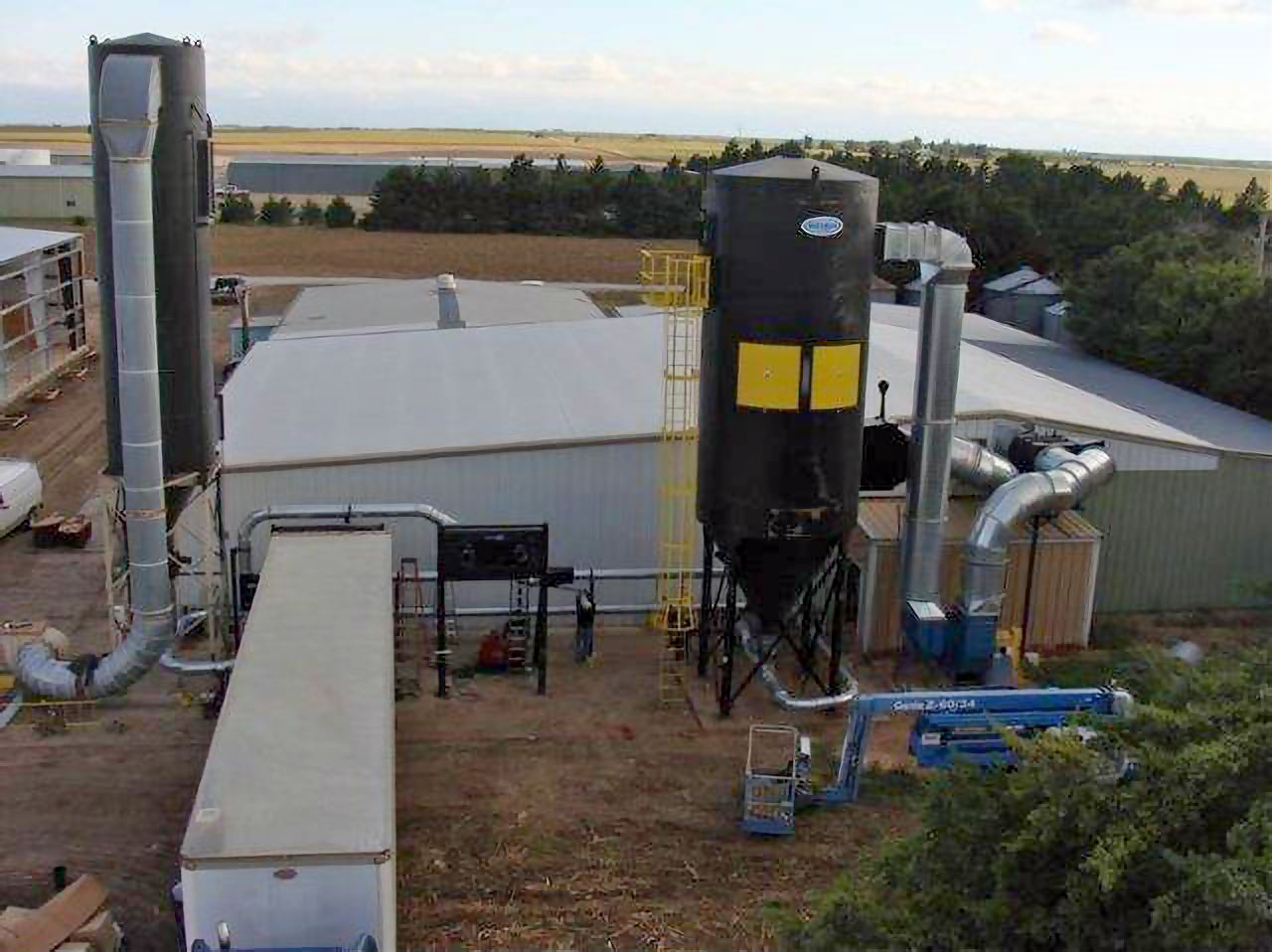
INDUSTRY: Custom Cabinets
PROBLEM: Wrong Collector for the Job
This woodworking company had installed a dust collection system, but within just a week their filters were already blinding off. Consequently, they were spending a lot of money on over-bags, constant compressed air pulsing, and filter changes. So, they needed to make a change.
Not all collectors are suitable for all applications. The Imperial Systems team examined the problems the company was having. They decided that a BRF baghouse would be the right solution. The problem was very fibrous wood dust. The original collector was a cartridge system, and cartridges usually aren’t the best solution for fibrous or stringy material.
Each BRF baghouse system is designed for each customer’s needs. We applied our knowledge of woodworking applications to solve this customer’s problem.
The BRF is handling this company’s fibrous wood dust with no problems. As a result, it has cut down on compressed air use, filter changes, and production downtime. Imperial Systems makes both cartridge collectors and baghouses. Therefore, we’re able to determine which one will work better for a particular application.
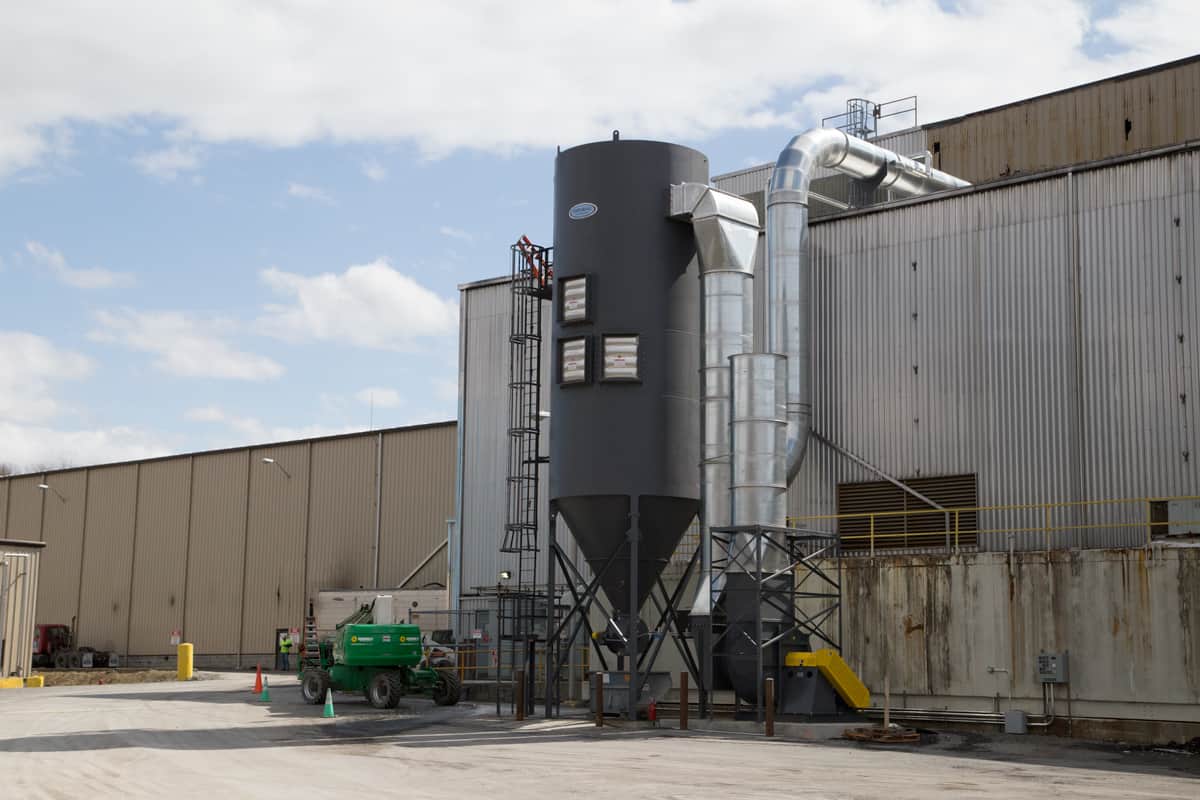
INDUSTRY: Paper Recycling
PROBLEM: NFPA Compliance, Dust Accumulation
This paper recycling company runs 24 hours a day, 365 days a year. The dust load is heavy and constant. The wood dust extraction systems they had in place were not up to the job: several inches of dust had accumulated on surfaces around the facility, creating a very severe fire hazard. Also, because there was so much dust in the air, the employees had to wear dust masks. Further, they were dealing with respiratory infections and eye irritation.
Employee health was at risk and a combustible dust accident was waiting to happen. So, the company came to Imperial Systems to design a solution to handle their very heavy dust load.
From consultation and drawings to engineering and fabrication, the company had constant contact with the Imperial Systems team. We made sure everything would work exactly as they needed it to. The project was completed in March of 2014, and the company had great praise for the design and installation teams.
Since installing the BRF baghouse system for paper dust, the company is now fully NFPA compliant and dust accumulation is no longer a problem. The facility is clean and the health problems the employees had been dealing with are resolved.
Not just any system can handle a heavy dust load with round-the-clock shifts. Imperial Systems has experience in the paper recycling industry to design a system that will handle this kind of abuse for many years to come.
Read more

 Wood Dust Filtration Challenges
Wood Dust Filtration Challenges







